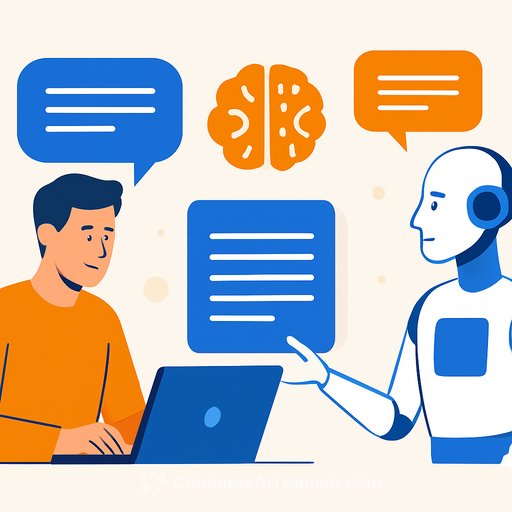AI Text Humanizers Are Moving From Novelty to Staple in the Writer's Stack
Writers are leaning into AI-but with a twist. Reports indicate 72% of professionals use AI somewhere in their workflow, and the fastest-growing area is the "humanizer" layer: tools that turn stiff, robotic output into copy with rhythm, emotion, and a conversational pulse. Over the past year, usage of these humanizing tools climbed roughly 40%, according to coverage from MetaCognitive.
The goal has shifted from churning out more text to improving it. Writers are using AI to refine tone, strengthen clarity, and keep voice consistent across platforms-without losing the human feel audiences expect.
What these tools actually do
Under the hood, humanizers restructure sentences, vary pacing, and tune sentiment so copy reads like a person wrote it. They keep meaning intact while smoothing awkward phrasing and eliminating that telltale "AI ring."
- Rewrites robotic lines into natural, conversational phrasing.
- Balances sentence length and cadence so paragraphs flow.
- Tunes tone (warm, direct, playful, formal) to match intent and audience.
- Preserves key facts and terms you specify as non-negotiable.
Why writers care
Readers can spot cold, formulaic copy in seconds-and they bounce. Surveys show 83% prefer content that feels personal and naturally written, and 68% say they trust brands more when the voice feels human. Search platforms are also rewarding helpful, people-first content; Google's guidance is a useful reference point: Creating helpful, reliable, people-first content.
As one consultant put it, "Readers can instantly tell when content feels cold or formulaic. AI humanizer tools give writers the warmth, relatability, and nuance that modern audiences expect."
Practical uses in your workflow
- Draft fast, then run a humanizer pass to clean tone and cadence.
- Feed 3-5 samples of your voice. Set guardrails: audience, grade level, banned phrases, must-keep terms.
- Use it to tighten intros, smooth transitions, and make CTAs sound like a person, not a template.
- Run a read-aloud test. If it sounds like you would say it, you're close.
Guardrails so you don't lose your voice
- Keep your quirks. Let some short, punchy lines live next to longer thoughts. Don't over-smooth.
- Lock facts, quotes, and compliance lines. Tell the tool what must not change.
- Verify names, dates, and stats. Humanizers improve style; they're not a fact source.
- Disclose AI assistance if your client or publication requires it.
A quick 10-minute pass that works
- Paste your draft with a one-sentence brief: audience, goal, voice.
- Ask for a humanized pass focusing on rhythm, clarity, and emotional fit.
- Request two variations: one tighter, one warmer. Keep the best lines from each.
- Final read-aloud. Trim filler. Restore any signature phrases the tool softened too much.
Metrics to watch
- Time on page and scroll depth (flow and clarity).
- Reply rate and qualitative comments (does it feel human?).
- Conversion on CTAs (trust and resonance).
- Brand voice consistency across channels.
What the trend means for working writers
Humanizers are becoming the bridge between speed and voice. Experts expect them to be standard in professional writing processes soon, and the early signal is clear: cleaner tone, higher trust, better outcomes-with your voice still in the lead.
Where to explore tools and training
If you want a curated starting point, here are useful resources:
- Popular AI tools for copywriting - vetted options to test in your stack.
- Courses by job - skill paths for writers and content teams.
Bottom line: use AI to write faster, then humanize to make it worth reading. Keep your voice, respect the reader's time, and let the tools handle the polish.
Your membership also unlocks:






